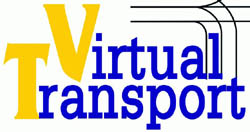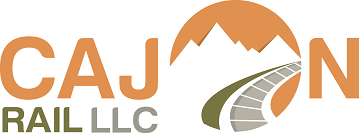Fogalmak
Network Rail
- Részletek
- Kategória: Fogalmak
- Készült: 2008. szeptember 22. hétfő, 18:57

Responsibilities
Network Rail owns the infrastructure, including the railway tracks, signals, tunnels, bridges, level crossings and most stations, but not the passenger or commercial freight rolling stock. Network Rail took over ownership by buying Railtrack plc, which was in "railway administration", from Railtrack Group plc for £500 million. The purchase was completed on 3 October 2002.
The company's headquarters is at Kings Place, 90 York Way, London N1 after moving on 26th August 2008 from 40 Melton Street, Euston, London. The current Chairman is Sir Ian McAllister, also Chairman of the Carbon Trust and formerly Managing Director of Ford Motor Company Limited. Its chief executive is Iain Coucher. Its executive board is small.
Following an initial period in which Network Rail established itself and demonstrated its competence in addressing the principal challenges of improving asset condition, reducing unit costs and tackling delay, the Government’s Rail Review in 2004 White Paper said that Network Rail should be given responsibility for whole-industry performance reporting, timetable development, specification of small and medium network enhancements, and the delivery of route-specific utilisation strategies (RUS). Some of these are functions which Network Rail already had; others - such as the obligation to devise route utilisation strategies - were transferred to Network Rail from the Strategic Rail Authority, a non-departmental public body, part of the UK government. (The SRA was subsequently abolished.)
Whilst owning over 2500 railway stations, it only manages 17 of the biggest and busiest railway stations in the UK. The other stations being managed by the various train operating companies (TOC).
Network Rail also secured a 15-year lease on Square One in Manchester, moving and recruiting 800 staff to one of Manchester's largest refurbished office spaces[2].
Control periods
For financial and other planning purposes, Network Rail works within 5-year "Control Periods", each one beginning on 1 April and ending on 31 March to coincide with the financial reporting year. These periods were inherited from Railtrack, so that the earlier ones are retrosopective, and not necessarily of 5 years duration. They are as follows:
- Control Period 1 (CP1): 1996 - 2001
- Control Period 2 (CP2): 2001 - 2004
- Control Period 3 (CP3): 2004 - 2009
- Control Period 4 (CP4): 2009 - 2014
- Control Period 5 (CP5): 2014 - 2019
Private sector status, governance structure and accountability
The Government denies that they have nationalised the rail network in order to prevent Railtrack's shareholders claiming the four year average price of Railtrack, about £10 per share, via the European Court of Human Rights. Simon Jenkins, former editor of the Times, wrote in a Times article about the Railtrack High Court case and Gordon Brown's aide, Baroness Shriti Vadera. “Can we engineer the solution through insolvency,” she e-mails Stephen Byers in July, “and therefore avoid compensation under the Human Rights Act.”[3][4]
There has been considerable controversy over whether Network Rail is a public-sector or a private-sector entity. Although officially a private sector organisation, the fact that its debts are underwritten by the government, and it is funded by the government, has led to it being described as being "nationalisation in all but name"[5]. It is also claimed that the government is keen for Network Rail not to be classified as a public sector organisation, as this would mean that the company's enormous debts (over £20 billion) would be counted as public expenditure liabilities.
The National Audit Office and the Statistics Commission both agree that Network Rail is a state owned company. The Office for National Statistics has repeatedly clashed with the National Audit Office and the Statistics Commission over whether the successor to Railtrack should be considered a private company - as the ONS believes - or included on the Government's books, as the NAO argues. The NAO says that as the Government is bearing the risk that would normally be borne by equity capital, and as it can appoint, through the SRA, a director who cannot be removed by members, Network Rail is effectively a subsidiary of the Government-controlled SRA. The Statistics Commission, set up by the Government to ensure that statistics are trustworthy, is known to question the basis of the ONS judgment that Government guarantees given to Network Rail are unlikely to be called in.[6][7]
The UK Office for National Statistics insists that it is correct to have classified Network Rail as in the private sector. Nethertheless some mistakes in referencing the company as a public sector entity are occasionally made; in October 2002 in the House of Lords government minister Lord McIntosh of Haringey, in answering a question, said: “The Question is about the West Coast main line, and it is true that the cost has escalated from a little over £2 billion to £10 billion. That shows incredible lack of control and forethought by Railtrack. We must get a grip of it, and we are getting a grip of it. However, we were able to get a grip of it only after it went into administration and we were able to take the company back again.”[8] In the House of Commons on 24 October 2005, the former Secretary of State for Transport Stephen Byers MP said: "... I make no apology for ... unwinding the Tory privatisation that was Railtrack" [9] And on 1 February 2007, the Leader of the House of Commons (Jack Straw) said: "... rail privatisation ... was one of the most catastrophic reorganisations, which we have had to resolve, and having done that — The hon. Member for Wellingborough (Mr. Bone) may mock, but we brought Network Rail into public ownership ..." [10] On BBC Radio 4's programme 'Any Questions' on 6 June 2008, the Secretary of State for Innovation, Universities and Skills John Denham MP was asked about Network Rail's directors' bonuses; referring to the company, he said: "... it was a very good thing that it was brought back effectively into public ownership after the total shambles that was created by dividing the railway up and privatising it."
The company is accountable to a body of members through its corporate constitution,[11] to its commercial train operator customers through its contracts with them (the contracts are subject to regulatory oversight), and to the public interest through the statutory powers of the Office of Rail Regulation.[12]
Since Network Rail does not have shareholders, its members hold the Board of Directors to account for their management of the business. Members are appointed by an independent panel and serve a three-year term. They have a number of statutory rights and duties which include attending annual general meetings, receiving the Annual Report and Accounts, and approving the appointment or re-appointment of Network Rail’s directors. Members have a duty to act in the best interests of the company without personal bias. They receive no payments other than travel expenses.
Members have clearly defined and limited powers; they do not run the company. Setting the strategic direction and the day-to-day management of Network Rail is the responsibility of the company’s Board of Directors. That direction must be consistent with the regulatory jurisdiction of the Office of Rail Regulation, and with the requirements of its contracts. The Office of Rail Regulation in turn operates within the overall transport policy set by the UK Department for Transport, including as to what the Government wants the railway industry to achieve and how much money the Government is prepared to put into the industry. This means that the degree of Government influence and control over the company is higher than it was before these enlargements of the powers and role of the Government were introduced by the Railways Act 2005.
At any one time there are around 100 members in total, drawn from a wide range of industry partners and members of the public. There are two general categories of membership, industry members comprising any organisation holding a licence to operate on the railway or preferred bidder for a railway franchise, and public members who are drawn from the wider stakeholder community.
Network Rail's main customers are the 21 passenger and four freight train operating companies, who provide train services on the infrastructure that the company owns and maintains. Network Rail does not run passenger services directly; ultimately both Network Rail and the train operating companies have the shared responsibility of delivering train services to the travelling public.
Monitoring Network Rail's performance
The Office of Rail Regulation monitors Network Rail's performance on a continuous basis against targets established by the regulatory authority in the most recent access charges review (2003), against obligations in the company's network licence and against forecasts in its own business plan. If performance is poor,the company will face criticism and possible enforcement action from its commercial customers (undertheir contracts) and from the Office of Rail Regulation (enforcing the company's network licence). It may also be criticised by its members in general meeting.
In the end of year report 2005/06, the ORR reported on train performance that: "Train Performance: Good progress has been made in improving punctuality. The Public Performance Measure (PPM) of 86.4% in the year is up from 85.5% (refreshed) at the end of the third quarter (Q3) and up from 83.6% last year." Network Rail Monitor, Executive Summary
Profit 1.For the first time in Network Rail's history a profit was made this year- allowing money to be reinvested into the network. 2.Train punctuality is at a seven year high. 3.Passenger numbers are at an all time high
Network Rail and National Rail
Network Rail should not be confused with National Rail. National Rail is a brand used to explain and promote a network of passenger railway services.
The two networks are very similar, but not exactly the same. Most Network Rail lines also carry freight traffic, some lines are freight only, and a few lines that carry passenger traffic are not part of the National Rail network (for example High Speed 1, Heathrow Express and the London Underground). Conversely some National Rail services operate over track that is not part of the Network Rail network (for example where they run on London Underground track).
Infrastructure maintenance
In October 2003 Network Rail announced that it would take over all infrastructure maintenance work from private contractors, following concerns about the quality of work carried out by certain private firms, and spiralling costs.
February 2004 saw the opening of an operations centre at Waterloo station in London, operated jointly by Network Rail and the train operating company South West Trains. This was the first full collaboration of its kind since privatisation, and it is regarded as a model for other areas of the network, with a further six integrated Network Rail + TOC Control Centres having opened since then, at Blackfriars, Croydon (Leading Control for First Capital Connect), Swindon, Birmingham, Glasgow and, most recently, Liverpool Street.
Track renewal, the ongoing modernisation of the railway network by replacing track and signalling, continues to be carried out by private engineering firms under contract. The biggest renewals project is the multi-billion-pound upgrade of the London to Glasgow West Coast Main Line.
Network Rail initially sub-contracted much of the work and the site to private Infrastructure Maintenance Companies such as Carillion and First Engineering. Other sub-contractors are used on site for specialist work or additional labour. These include:
- Sky Blue
- Balfour Beatty
- Laboursite
- BCL
- Atkins (Atkins Rail)
Since 2003 Network Rail has been building up significant in-house engineering skills, including funding of apprenticeship and foundation degree schemes. Network Rail reports significant savings resulting from the initial transfers of work away from contracting companies. Additional contracts were taken back by Network Rail after the serious accident at Potters Bar and other accidents at Rotherham and King's Cross led Jarvis to pull out of the track repair business. Shortly after this, and due to other failures by maintenance companies, Network Rail took control of many more maintenance duties.
In 2006, Network Rail made public a high-tech plan to combat the effects of slippery rail. This plan involves the use of satellites for tracking trouble areas, water-jetting trains and crews using railhead scrubbers, sand sticks and a substance called Natrusolve, which dissolves leaf mulch.[13]
All workers working on, near or trackside have to undergo a Personal Track Safety assessment (re-assessed every two years).
The safety record of the company has been marred by the Grayrigg derailment, when a Virgin express crashed at Grayrigg in Cumbria on 23 February 2007. The train was derailed by a faulty set of points. Network Rail have admitted responsibility for the accident. The RAIB investigation is ongoing, and criminal charges may be brought.
In September 2007 it was announced that the number of track renewal contractors will be reduced to four from the current six. These are now
- AmeySECO
- Balfour Beatty
- First Engineering Ltd.
- Jarvis PLC
The GRIP process
For investment projects, as opposed to routine maintenance, Network Rail has developed an eight-stage process designed to minimise and mitigate risks. This is known as the Guide to Railway Investment Projects (GRIP). The stages are as follows: 1. output definition; 2. pre-feasibility; 3. option selection; 4. single option selection; 5. detailed design; 6. construction, test and commission; 7. scheme hand back; 8. project close out.
Each stage delivers an agreed set of outputs to defined quality criteria.
http://en.wikipedia.org/wiki/Network_Rail









